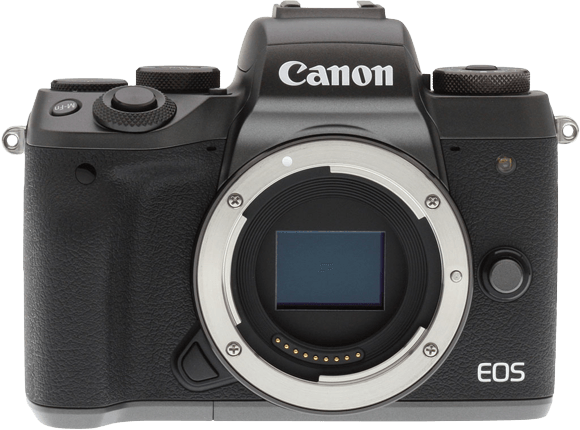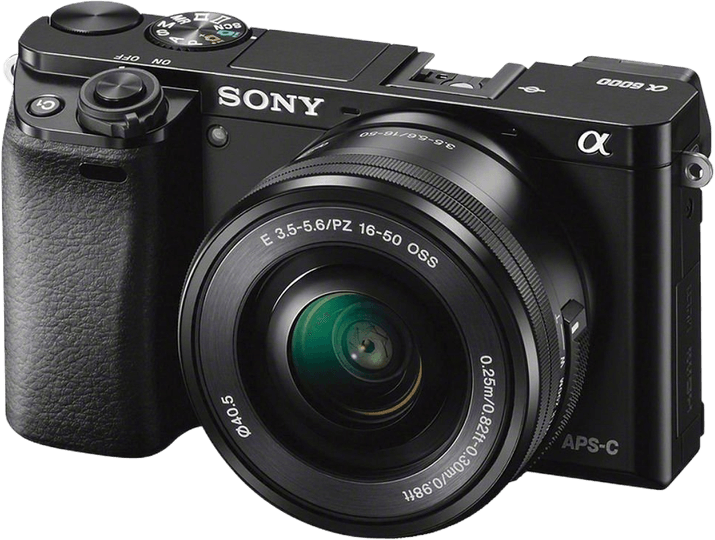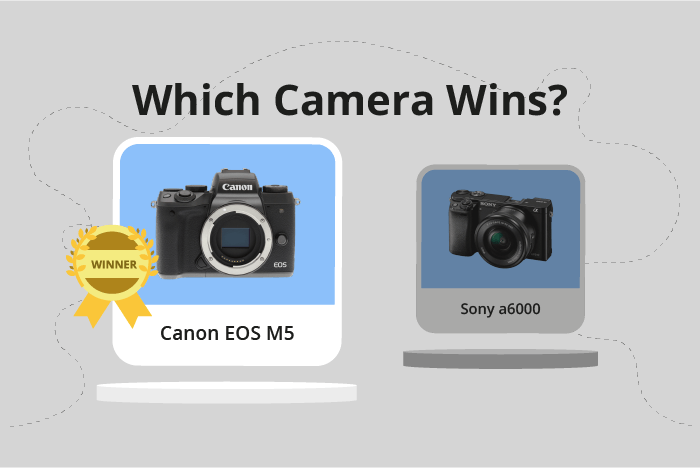Canon EOS M5 vs Sony a6000 Comparison
Canon EOS M5

Sony a6000

The Canon EOS M5 emerges as the winner with a score of 60/100, while the Sony a6000 trails slightly behind at 57/100. Both cameras are mirrorless and were launched in 2016 and 2014, respectively. They share similar specifications, including camera size and weight. However, the EOS M5 has a slightly larger body, measuring 116 x 89 x 61mm and weighing 427g. On the other hand, the a6000 is smaller and lighter, with dimensions of 120 x 67 x 45mm and a weight of 344g.
The EOS M5’s higher score indicates its superior performance, and its launch price of $980 reflects this. Conversely, the a6000’s lower score and launch price of $799 suggest that it may not offer the same level of quality as the EOS M5. However, its smaller size and lighter weight make it more portable and convenient for some users.
Taking these factors into account, the Canon EOS M5 is the better choice for those seeking higher performance and quality, while the Sony a6000 may be more suitable for users prioritizing portability and affordability.
Canon EOS M5 vs Sony a6000 Overview and Optics
The Sony a6000 wins the optics comparison with a score of 67/100, while the Canon EOS M5 scores 64/100. Both cameras share several common specifications, such as 24-megapixel CMOS sensors, APS-C sensor size, and a lack of image stabilization. They also have different lens mounts, with the Canon EOS M5 using the Canon EF-M mount and the Sony a6000 using the Sony E mount.
The Sony a6000 outperforms the Canon EOS M5 in a few areas. It has a slightly higher megapixel count at 24.3 compared to the M5’s 24.2. The a6000 also boasts a faster shooting speed of 11 frames per second (fps) versus the M5’s 9 fps. Additionally, the Sony a6000 has a higher DXOMARK sensor score of 82, indicating better overall image quality.
On the other hand, the Canon EOS M5 has some advantages over the Sony a6000. Its Digic 7 processor is newer and more advanced than the a6000’s Bionz X processor. This could result in better image processing and faster performance.
In comparing the optics of the Canon EOS M5 and the Sony a6000, the Sony a6000 is the winner due to its higher score, faster shooting speed, and better sensor performance. However, the Canon EOS M5 still offers a strong contender with its advanced processor and comparable specifications. Both cameras provide high-quality optics, and the choice between them will ultimately depend on the user’s specific needs and preferences.
Canon EOS M5 vs Sony a6000 Video Performance
The Canon EOS M5 outperforms the Sony a6000 in video capabilities, scoring 70/100 compared to the Sony a6000’s 56/100. Both cameras share some key specifications, such as Full HD video resolution (1920 x 1080) and a maximum video frame rate of 60fps. However, there are differences that result in the higher score for the Canon EOS M5.
The Canon EOS M5’s advantage lies in its built-in time-lapse functionality, which the Sony a6000 lacks. This feature allows users to easily create stunning time-lapse videos without the need for additional equipment or software, making it a more versatile option for videography enthusiasts.
The Sony a6000, on the other hand, does not offer any distinct advantages in video capabilities over the Canon EOS M5. It shares the same video resolution and frame rate, but falls short due to the absence of built-in time-lapse functionality. This makes the Canon EOS M5 the superior choice in terms of video performance.
In comparing the Canon EOS M5 and Sony a6000, it becomes clear that the former offers better video capabilities. The built-in time-lapse functionality gives the Canon EOS M5 an edge, making it a more appealing choice for those looking to capture video alongside their photography. While the Sony a6000 does not offer any unique advantages in this area, it still provides adequate video performance for those who prioritize other features in their camera selection.
Canon EOS M5 vs Sony a6000 Features and Benefits
The Canon EOS M5 outperforms the Sony a6000 in terms of features, scoring 61 out of 100, while the Sony a6000 scores a 41. Both cameras share some specifications, such as the absence of GPS and the presence of Wi-Fi and a flip screen. However, the Canon EOS M5 excels in certain aspects, making it the superior choice in terms of features.
The Canon EOS M5 boasts a larger screen size of 3.2 inches, compared to the Sony a6000’s 3-inch screen. The screen resolution of the EOS M5 is also significantly higher at 1,620,000 dots, providing a clearer and more detailed display than the a6000’s 921,600 dots. Another advantage of the EOS M5 is its touchscreen, which the Sony a6000 lacks. This feature allows for easier navigation and control of settings.
Despite its lower feature score, the Sony a6000 does not have any notable advantages over the Canon EOS M5 in terms of features. Both cameras lack GPS and Bluetooth, and their Wi-Fi capabilities are equal.
Taking these factors into account, the Canon EOS M5 proves to be the better camera in terms of features, offering a larger and higher-resolution screen along with a touchscreen for user convenience. The Sony a6000, on the other hand, does not provide any significant advantages over the EOS M5 in this aspect. As such, the Canon EOS M5 is the clear winner in this comparison.
Canon EOS M5 vs Sony a6000 Storage and Battery
The Sony a6000 outperforms the Canon EOS M5 in storage and battery, scoring 21 points compared to the M5’s 16 points. Both cameras have one memory card slot and accept SD, SDHC, and SDXC cards. However, the Sony a6000 also supports Memory Stick Pro Duo and Pro-HG Duo cards, giving it an edge in storage options.
The Sony a6000 also boasts a longer battery life, providing 360 shots per charge, while the Canon EOS M5 lasts for 295 shots. Both cameras use different battery types, with the a6000 using the NP-FW50 and the M5 using the LP-E17. Neither camera has USB charging capabilities.
In terms of storage and battery, the Sony a6000 is the superior choice due to its additional memory card compatibility and longer battery life. The Canon EOS M5 falls short in this category, but still offers adequate storage and battery life for casual use. Ultimately, the Sony a6000’s advantages make it the better option for those prioritizing storage and battery performance.
Canon EOS M5 vs Sony a6000 – Our Verdict
Are you still undecided about which camera is right for you? Have a look at these popular comparisons that feature the Canon EOS M5 or the Sony a6000:

